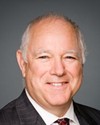Good day.
Evidence of meeting #9 for Veterans Affairs in the 40th Parliament, 2nd session. (The original version is on Parliament’s site, as are the minutes.) The winning word was access.
A recording is available from Parliament.
Evidence of meeting #9 for Veterans Affairs in the 40th Parliament, 2nd session. (The original version is on Parliament’s site, as are the minutes.) The winning word was access.
A recording is available from Parliament.
Deputy Chief Officer, Health Information Management, Veterans Health Administration, United States Department of Veterans Affairs
Good day.
Bloc

Guy André Bloc Berthier—Maskinongé, QC
That is a very interesting health care system. I believe consideration is being given to bringing a similar system not only for veterans but for the general population as well.
Regarding confidentiality, to access client information, is a code required? Can anyone access a client's file?
Moreover, is there any type of information that cannot be included in a client's file because of its confidential nature?
Deputy Chief Officer, Health Information Management, Veterans Health Administration, United States Department of Veterans Affairs
I'll answer the first question.
In the United States we also hope this technology is widely adopted and that it doesn't stay within the Department of Veterans Affairs or other large providers. We have a project that is similar to some of the initiatives you have, called the nationwide health information network, where VA would connect to this central system and share information across private sector and other federal agencies, for example. It is currently being done only with the authorization of the patients--in our case, the veterans.
I don't know if you want me to stop in between so you can translate.
Bloc
Deputy Chief Officer, Health Information Management, Veterans Health Administration, United States Department of Veterans Affairs
Thank you.
So the access, for example, in our medical centres is actually governed by what your role is in the medical centre. It's done through a series of menus and keys for specific access. For example, only physicians who have medication ordering authority have a key to do medication ordering. So in many cases the electronic access gives us the ability to limit and control access in a way that we were never able to do in a paper environment. This comes not just with the technology, but we also do a lot of training with our providers on what is appropriate for them to access, what they need to know, how they determine the “need to know” of information, both by administrative staff and by clinical staff. So it's a combination of technology limiting access and educating those who use the system on what's appropriate to access.
We tried for many years moving the paper record around and trying to keep it secure, and in no way do I believe that this paper record was more secure than the electronic environment we're in today. So right now the access to the system would be limited to those who have a relationship with VA, either a VA employee or someone who's contracting on behalf of VA to provide those services. We do have mechanisms to control access down to individual patients. So for example, in this country veterans' service organizations assist the veterans in preparing their claim files, and that is done by issuing a power of attorney between the veteran and the veterans' service organizations. In those cases, they only have access to those veterans. The same is true for our quality and oversight groups. We will limit those to the “need to know”, as is also the case for research. We can limit research down to those who are participating, for example, in a research study.
On the second question, on whether there are things that cannot be put into a client file, I know there are some organizations that do not put HIV results, for example, in their electronic health record. This is not the case for VA. We do include what we would call sensitive laboratory results or test results. One area in which you may not see all of the information is mental health. Mental health may put in summaries of information but retain detailed client notes separately from the electronic health records system. So this is an area that very likely may just have summary information and not all the details.
Bloc

Guy André Bloc Berthier—Maskinongé, QC
If, as a client, I do not want certain information to be put into the computer system—for example, if I am HIV positive or if I've had psychological counselling as a result of a mental health problem such as PSTD, must I request that this information be withheld? How does it work? Do I have any control over the information that will be put into the computer system?
Deputy Chief Officer, Health Information Management, Veterans Health Administration, United States Department of Veterans Affairs
Currently, in our verbiage, disclosure would mean that it was not for treatment, it was not for health care operations, which would be quality, for example. All of those disclosures would require a patient authorization, and the patient must specifically allow disclosures in those specific areas. In VA we would need a general disclosure, but for areas of drug, alcohol, sickle cell anemia, and HIV we would need a specific authorization from the veteran to allow that disclosure. That does not apply for those who are providing treatment, either on behalf of an employee of the VA or under contract to the VA.
So the veteran very much controls what we disclose externally, but does not have the same control internally of what other providers can see. If a patient in the VA is being seen in primary care, in mental health, and in orthopedics, those providers can see the information from the other sources.
Conservative

The Chair Conservative David Sweet
Thank you very much for your answers, Madam Graham.
Mr. Stoffer now, for five minutes.
NDP

Peter Stoffer NDP Sackville—Eastern Shore, NS
Thank you very much, Madam Graham, for appearing before us today.
I believe the question from my honourable colleague was, if I didn't want to be part of the electronic system, if I liked the old system of paper files, warm bodies, and someone to talk to, could my records be taken out of this computer system and put into the manual method the way it was before?
Deputy Chief Officer, Health Information Management, Veterans Health Administration, United States Department of Veterans Affairs
No, not if you're seeking treatment with NVA.
NDP

Peter Stoffer NDP Sackville—Eastern Shore, NS
You'd have no choice but to be in the electronic system?
Deputy Chief Officer, Health Information Management, Veterans Health Administration, United States Department of Veterans Affairs
Right.
We have no way of processing, for example, laboratory or radiology orders in a safe manner outside of the system. We have paper contingency processes, but to revert to those on a case-by-case basis would be very difficult, and there would be a patient safety implication in trying to process that through a separate workflow.
NDP

Peter Stoffer NDP Sackville—Eastern Shore, NS
What do you do for those I would call the old school veterans, the World War II ones who are not adapted to computer technology, and their spouses?
Deputy Chief Officer, Health Information Management, Veterans Health Administration, United States Department of Veterans Affairs
Actually, we haven't found this to be an age-limiting technology. The World War II veterans are just as happy when their provider is talking to them and showing them their laboratory results electronically, graphing them and really explaining them. We haven't really found that age gap. Actually, one of the largest cohorts of patients adopting our personal health record is patients over 65. Many of our veterans maintain a copy of their medical record on paper. Certainly, as they request it, we print the documents out for them so they can maintain their own information as well. But we really haven't seen that big divide among the age groups.
We also have libraries within each of the medical centres, and for veterans who may not have a computer in their home, we provide assistance and technology within the clinics and medical centres so they will have a computer available to them.
NDP

Peter Stoffer NDP Sackville—Eastern Shore, NS
I have two other questions for you.
It appears that you have a lot of fingers in the pie of a particular file--be it pharmaceutical, MRI treatment, a provider doing it. It appears that many people could be accessing one person's particular sensitive information. I'm wondering how you provide the security around that, if you could repeat that answer again.
Also, if a veteran dies, does the information die with the veteran, or is it still online and available for a spouse who may decide to use that information at a later date?
Deputy Chief Officer, Health Information Management, Veterans Health Administration, United States Department of Veterans Affairs
I'll answer the second question first.
By law, our retention of records, paper and electronic, of the patients' medical records, is 75 years after the last date of inactivity. When patients expire, we have an obligation to retain their records for a period of 75 years. Much of this has to do with spousal requests for benefits and for research purposes. And much of that came after it was determined that ionizing radiation exposure, for example, had harmed individuals and that many of their records had already been destroyed. So for about the last 20 years, we've had a 75-year retention requirement for our medical records, regardless of the medium they're in, whether paper or electronic.
Our electronic system has a security foundation--we talked a little bit about this earlier--that works with a series of menus relative to the job within the facility. For example, the housekeeper doesn't have the laboratory menu and the nurse doesn't have the physician ordering menu. That's one level of the security that's applied. All the individuals who work for the VA or who have access to computer systems have background checks. They have to take privacy and security training. And then the system itself has security safeguards. The first level of that is the menus, subject to the job.
The second level of that security is known as security keys, specifically keys that have to be granted to you to do certain functions. The example I used was the ability to order medications. That has to match up with what you are authorized to do by your licence within the organization.
To speak to who's accessing, one of the advantages of the electronic health record is that it's not only in one place at a time. If you are an in-patient and your physician wants to review your chart, but you also are in radiology receiving a procedure, both of those providers could be looking at your record at the same time. So this multiple access was intentional.
We do lock the system in certain areas. Two providers cannot be ordering on one patient at the same time, so there cannot be conflicts between the orders.
The ability to access from multiple points is certainly a benefit. Also, the ability to audit who's accessing the record is another benefit of the electronic health record. You know who accessed the record and when it was accessed, along with the components of the record accessed.
Conservative

The Chair Conservative David Sweet
Thank you very much, Mr. Stoffer, and thank you very much, Ms. Graham.
Now we'll go to Mr. Kerr.
Conservative

Greg Kerr Conservative West Nova, NS
Thank you very much, Mr. Chair.
Welcome, Ms. Graham. It's nice to have you here with us.
Deputy Chief Officer, Health Information Management, Veterans Health Administration, United States Department of Veterans Affairs
Thank you.
Conservative

Greg Kerr Conservative West Nova, NS
We appreciate the information.
Do I understand correctly that the Department of Defense does not keep electronic records?
Deputy Chief Officer, Health Information Management, Veterans Health Administration, United States Department of Veterans Affairs
The Department of Defense has an electronic outpatient record known as AHLTA, and a few of the Department of Defense in-patient sites have a commercial product called essentris. Right now, VA is receiving information from both. The Department of Defense does not have a comprehensive electronic health record that spans all treatment areas.
One thing I didn't go into detail about is that the electronic health record I described to you is used for outpatient, in-patient, long-term care, and home health. In the VA world, it's used at all levels and settings of care.
Conservative

Greg Kerr Conservative West Nova, NS
The reason I asked--and I appreciate the answer--is this. Does that make it difficult to set up your records? Do you have to do a fair amount of research? Or does the information flow quite freely to you, even if it's not all consolidated?
Deputy Chief Officer, Health Information Management, Veterans Health Administration, United States Department of Veterans Affairs
Their outpatient record does flow to us. For quite some time, we've received, for example, laboratory, pharmacy, and radiology information from the Department of Defense. They actually have an older system that was based on the original VistA system, which VA has used for some of those core functions, such as lab, radiology, and admission and discharge transfer files.
So we can view some of the information from the Department of Defense. For example, now we're able to view some of the theatre notes written in Iraq or Afghanistan, maybe when the patient was initially injured.
We also have some workarounds with them. For example, if a severely injured veteran or service member is returned to the United States at Walter Reed in Bethesda, we also get an indexed, scanned copy of their record for the polytrauma sites at VA to be able to access their information. That's certainly not the ideal, but at least the information is available to our providers when we assume care for some of these veterans.
We care for some of them while they're on active duty, as they actually go back to active duty.
Conservative

Greg Kerr Conservative West Nova, NS
So there is a pretty good interchange of information in regards to how it's done.